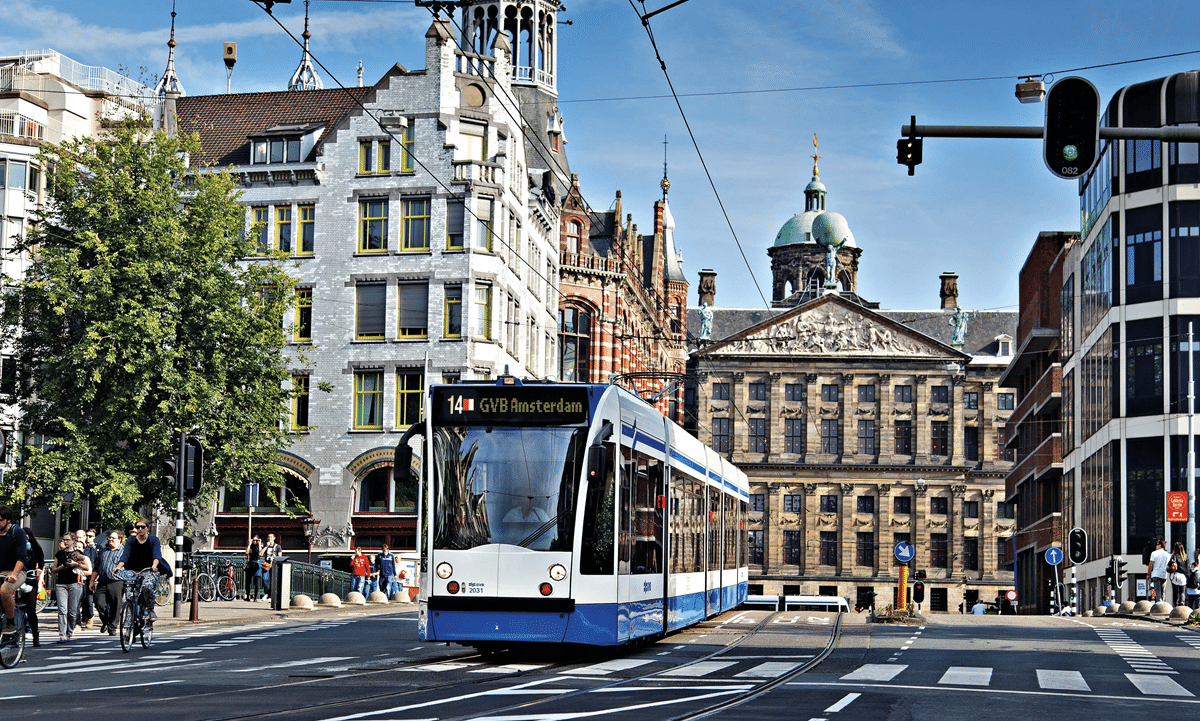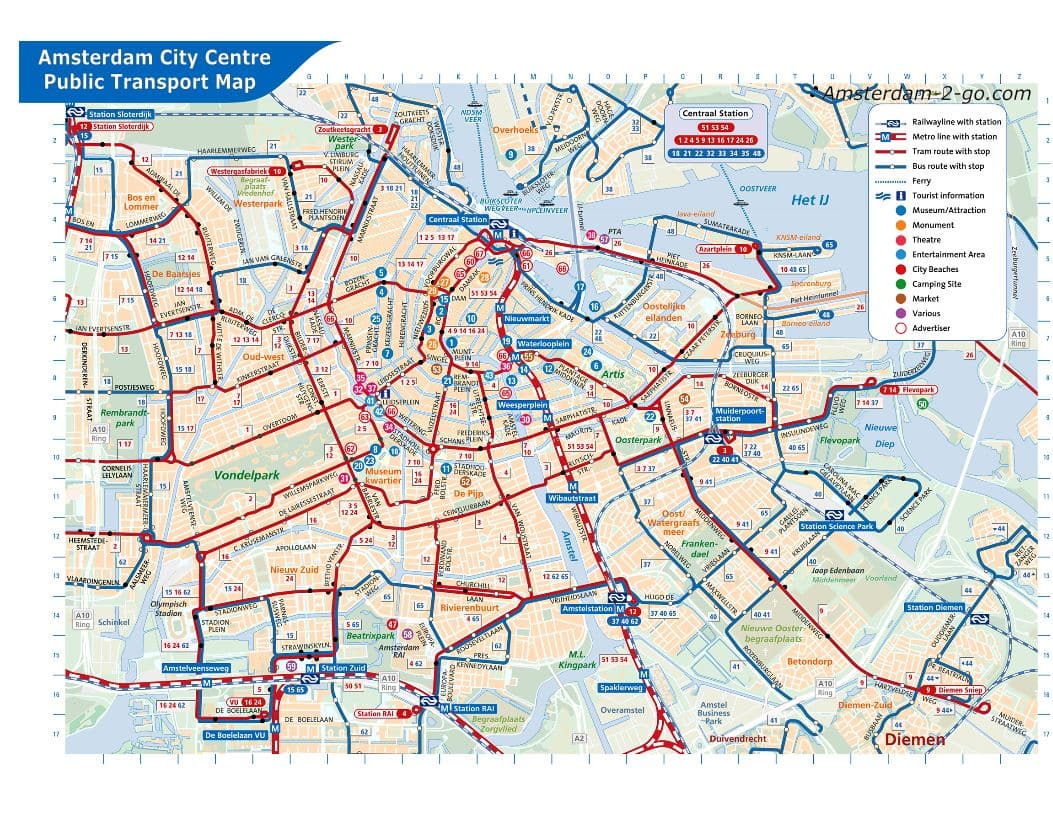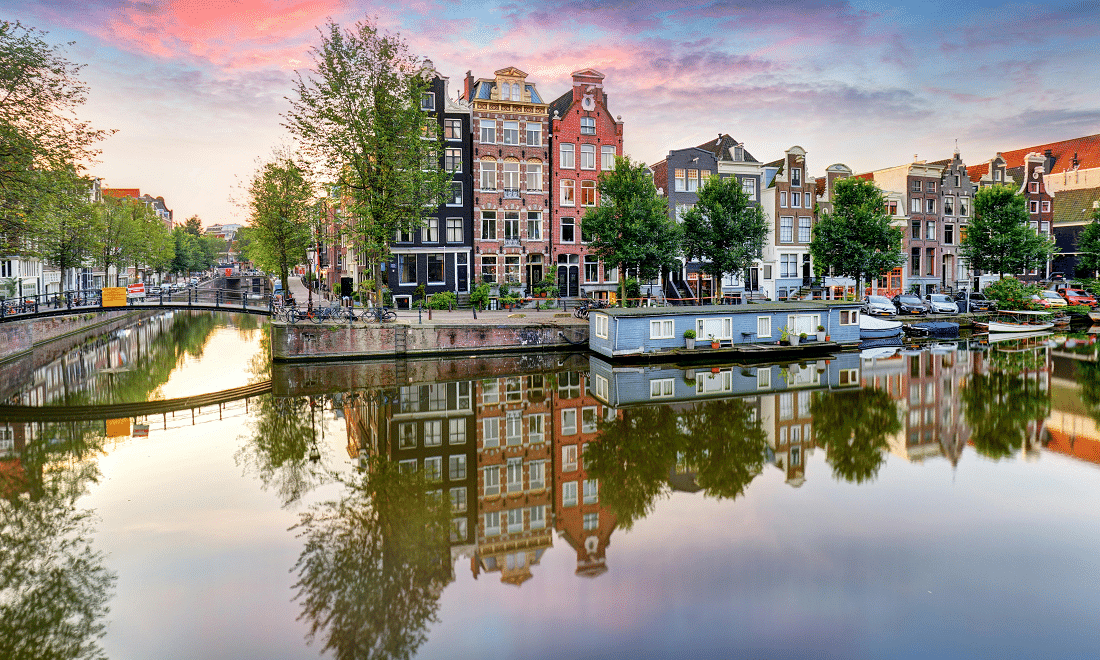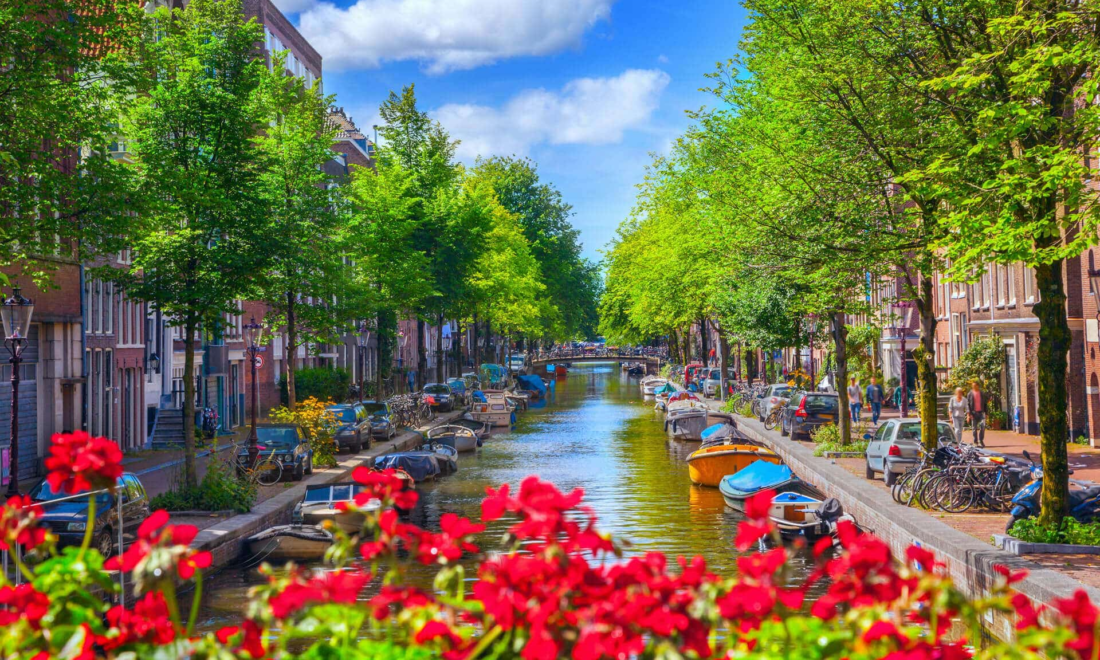In this Amsterdam Transportation Guide, we’ll reveal the best ways to get to this city and move around. So, if you’d like to learn more and make your traveling easier, faster, and above all, cheaper, please stay with us.

©
Our website includes affiliate links. So, remember that we may receive commissions when you click our links and make purchases. Please read our legal disclaimer document for more information about our Affiliate disclaimer and other disclaimers like the Fair-Use disclaimer.
Travel to Amsterdam
If you plan to visit Amsterdam, you can quickly get there by plane, train, car, or boat. Amsterdam Airport Schiphol is an award-winning airport that offers flights to 323 destinations. You can also take a high-speed train from Paris, London, Berlin, or Brussels to Amsterdam. The Port of Amsterdam is also a great option, ranking fourth in Europe. Regardless of your chosen mode of transportation, here are some helpful tips and up-to-date information to make your journey as smooth as possible.
By Air
Arriving by plane to the city is easy. Namely, the main airport is served by the most prominent air carriers. Therefore, flights there are widespread. Secondly, the Amsterdam Airport Schiphol is connected to Amsterdam Central Station via a railway line, the quickest and most convenient way to travel. The ride takes only 15 minutes, and trains depart daily and at night. You can also find a direct connection to Schiphol at stations RAI, Amsterdam Zuid, and Hoofddorp.
Note: You can check SkyScanner for valuable flight deals. Furthermore, you can also visit Tiqets to find some valuable deals.
Arrival by train
If arriving in Amsterdam by train, your journey will likely terminate at Amsterdam Central Station. From there, completing your journey by public transport or taxi is simple. If you are traveling from another station in the Netherlands, you can choose another Amsterdam train station nearer your accommodation.
Note: You can check Omio for valuable transport prices for trains and buses.
Arrival by boat
Amsterdam is a central hub for transport and travel. It continues to receive millions of visitors each year who arrive by boat. The Dutch have been a maritime nation for centuries, so this is quite a fitting gateway to the city. Whether disembarking from a cruise ship or private sailboat, reaching the city from the water is one of the most important ways.
Arrival by car
Each year, about one million visitors arrive in Amsterdam by car. While the city is hospitable to drivers, the inner city is quite enclosed. Before arriving, learning about the city’s motorways, roads, and parking options is advisable to make the most of your trip.
Parking on the outskirts of Amsterdam
Using the parking garages and park & ride (P+R) facilities outside the central area is generally recommended. These offer excellent public transport connections, allowing you to reach your final destination quickly and efficiently. During your stay in Amsterdam, traveling by tram, bus, or metro is a relaxing option wherever you go. Learn more about the P+R parking options in Amsterdam or check the current parking availability.
How to Get Around Amsterdam
Public transport in Amsterdam
Traveling within Amsterdam by public transport is straightforward and convenient. GVB operates an extensive network and connects the city’s neighborhoods by train, tram, metro, bus, and ferry.
Please note: GVB’s public transport network is cashless. You can only check in with a ticket or debit/credit card.
OVpay
“OVpay is a new method to check in and out of public transport using your debit or credit card. Hold your card against the reader on the bus, tram, or metro and wait for the beep to confirm your check-in. Remember to check out with the same card at your destination.”For more information, visit the OVpay website.
Public transport chip card (OV-Chipkaart)
In Amsterdam and throughout the Netherlands, the public transport chip card (OV-Chipkaart) is a rechargeable card for trams, buses, metros, and trains. Residents typically own a personalized rechargeable card. However, buying a non-personalized card can also be reused and recharged with credit at any time.
- Non-personalized cards: These are available at GVB ticket machines, GVB Tickets & Info offices, selected newsstands, and supermarkets.
- Personalised cards: Available online. Please note that you can use public transport cards provided by Dutch Railways (NS) on other parts of public transport. These passes require a passport-style photo.
The official OV-Chipkaart website offers helpful, in-depth advice in English, from checking in and out and transfers to public transport companies and detailed explanations about how to recharge your card with credit.
Tram
There is a reliable and frequent tram service across Amsterdam (except for Amsterdam-Noord), with many routes terminating at Central Station. It is easy to check in and out with a public transport chip card (OV-Chipkaart) at the start and end of your journeys (including when you change trams). Alternatively, you can buy 1, 24, or 48-hour tickets and other tickets (including multi-day ones) at GVB Tickets & Info offices or GVB ticket machines.
Bus
Amsterdam’s extensive bus network connects all neighborhoods with other city areas and extends into the Amsterdam Metropolitan Area. The top bus companies include GVB (primarily within Amsterdam), Connexxion (R-Net), and EBS, with many routes operating to and from Amsterdam Central Station. It is easy to check in and out with a public transport chip card (OV-Chipkaart) at the start and end of your journeys (including when you change buses). Alternatively, you can purchase single-journey, 1, 24, or 48-hour tickets at GVB Tickets & Info offices or GVB ticket machines.
Metro
Amsterdam’s metro network extends from Central Station to the city’s outskirts. Its four routes are often the fastest way to reach districts like Zuidoost, Amstelveen, and Amsterdam Noord. All metro stations have check-in and check-out ports, accessible only with a public transport chip card (OV-Chipkaart) or another valid travel card. Suppose you do not have a personal chip card; you can buy a 1-hour ticket or a rechargeable non-personalized public transport chip card at GVB service desks or ticket machines at the station.
Ferry
Amsterdam’s ferries are free and essential to cross the River IJ to Amsterdam Noord. The most popular route is from Central Station to Buiksloterweg, which runs frequently 24/7. Other routes include NDSM Wharf and IJplein. Some ferries cross the North Sea Canal to different parts of the Amsterdam Metropolitan Area.
Click here for GVB’s full, interactive map of Amsterdam ferry routes.
Please note: the North Sea Canal ferry services transport motorized vehicles for a small fee.
Train
Trains provide superb connections with Amsterdam Airport Schiphol, different parts of the city, other Dutch cities, and direct connections with Belgium, France, and Germany. Furthermore, Amsterdam Central Station is the primary station, delivering fast access to the city center and public transport network. You can buy tickets from the yellow ticket machines or station customer service desks.
Additionally, for Dutch train schedules, use the online planner or download the mobile apps NS Reisplanner and 9292.
Note: You can check SkyScanner for valuable flight deals. Furthermore, you can also visit Tiqets to find some valuable deals.
Park and Ride (P+R)
Park and Ride (P+R) is the most innovative and affordable way for drivers to park and travel into Amsterdam’s city center. These car parks are near motorways on the city’s outskirts and have excellent public transport connections. Public transport brings you right into the center of Amsterdam in no time.
Visit Amsterdam city centre using Park and Ride.
Parking in a Park and Ride (P+R) car park costs only €6 or €13 per 24 hours – with a maximum parking time of up to 96 hours (subject to exceptions). All this is of excellent value for visitors to Amsterdam who will be traveling into the city center zone.
Cycling in Amsterdam
Amsterdam is renowned for being one of the most bicycle-friendly cities in the world, with most of its citizens having ridden bikes since they were young. That’s why the Amsterdam Metropolitan Area has many bike paths, which make it easy to explore the local attractions on your own or as part of a guided bike tour. Moreover, renting bicycles is possible in all parts of the city, with multiple rental companies located around Central Station, Leidseplein, and hotels. It is usually possible to rent a bike for at least 3 hours per day, with the average daily rental price being €10.

©gvb.nl
Transport Saving money tips
There are several ways to travel cheaply (unlimited) in Amsterdam:
- I amsterdam City Card: The I amsterdam City Card includes unlimited use of Amsterdam’s public transport network for 24, 48, 72, or 96 hours. The card also gives you a discount on museums and attractions.
- GVB day ticket: Multi-day tickets are available for 1 to 7 days, starting from €7.50, and are valid on all GVB trams, buses, and metro services.
- Amsterdam & Region Travel Ticket: The Amsterdam & Region Travel Ticket provides unlimited access to all trams, buses, and metro lines operated by GVB, Connexxion, AllGo, R-net, and EBS, including night lines and NS in Amsterdam and the region for 1, 2, or 3 days. It’s affordable and convenient for travelers.
That was all from our Amsterdam Transportation Guide. We recommend using the links above to learn more about the city’s transport. But if you’d like to know more about how to plan your trip to this magnificent city, we suggest reading our related article, The Amsterdam Travel Guide.
References and sources:
Photo credits:
Feature photo credits: gvb.nl






